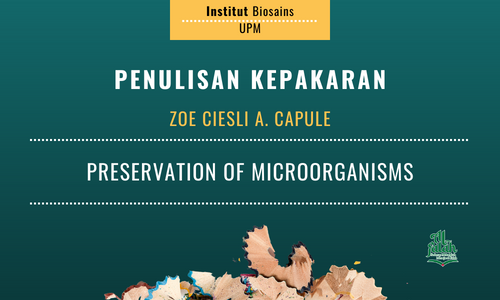(Virtual Internship Programme 2021 student from University Santo Tomas, Philippines. The programme was coordinated by Microbial Culture Collection Unit (UNiCC), Institute of Bioscience)
The Earth is approximately 4.6 billion years old. Contrary to popular belief, its first inhabitants were not plants, dinosaurs or even Homo sapiens but microorganisms 1. In the beginning, the Earth was extremely uninhabitable due to the absence of oxygen and high concentrations of nitrogen and carbon dioxide in the atmosphere, which made the environment toxic to living organisms. However, sometime between 3.8 to 4.3 billion years later, the first microbial cells thatwere capable of utilizing sulphur appeared and from then life on Earth began 1. The existence of microorganisms marked the beginning of life on Earth. Cyanobacteria that pioneered the great oxygenation event existed after the purple sulphur bacteria and slowly made the Earth habitable for all kinds of living organisms 1.
Currently, microorganisms are known to be used for the production of different food products, such as wine, cheese, bakery products etc. Moreover, the advancements in biotechnology have developed new methods of utilizing microorganisms that could be of great use in different industries. Looking up towards the vital roles of microorganisms in our society and environment, it is important to preserve them in an appropriate way, especially for those which were isolated from extremely challenging areas. Preservation maintains the viability of the microorganisms without the risk of morphological, physiological, or genetic changes until they are required for further use 3.
There are a number of methods used in the preservation of different microorganisms. For example, filamentous fungi which do not tolerate freeze-drying are being preserved simply by growing it on common agar media or by storing it under oil or water3. Whereas, other commonly used preservation methods for microorganisms include serial subculturing, wherein cultures are periodically passed in liquid or agar media 2 ; storage at low temperature (4 - 8 oC) on agar plates or slants media 2; freeze-drying which involves freezing of the of microorganism suspensions and followed by sublimation under reduced pressure 2; and cryopreservation, which involves the lowering of temperature down to -20 oC (or lower), in order to reduce the biochemical reactions and metabolism rate of microorganisms by freezing 3. The preservation of microorganisms plays an important role in maintaining the viability of cultures, which will be used not only by the researchers to generate new knowledge but also by different industries to develop novel, useful, and environmentally friendly applications that will benefit mankind.
References:
- Bender, Madigan, Buckley, Sattley, & Stahl. (2019). Brock Biology of Microorganisms FIFTEENTH EDITION.
- Green, L. (2015). Culturing and Preserving Microorganisms. Practical Handbook of Microbiology, Third Edition, 39–44. https://doi.org/10.1201/b17871-5
- Hop, D. Van. (2018). Establishment and Management of Culture Collections of Microogranisms (MBRC): An Overview. In Book. https://doi.org/10.1007/978-3-319-96971-8
Tarikh Input: 01/06/2023 | Kemaskini: 01/06/2023 | azah
PERKONGSIAN MEDIA












.png)






